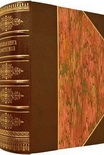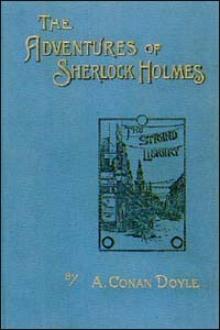My Autobiography, Charles Chaplin [books to read in your 20s .TXT] 📗

- Author: Charles Chaplin
Book online «My Autobiography, Charles Chaplin [books to read in your 20s .TXT] 📗». Author Charles Chaplin
When Spoor eventually showed up, I confronted him about my salary and bonus. He was profuse with apologies, explaining that he had told the front office to take care of all business arrangements. He had not seen the contract, but assumed that the front office knew all about it. This cock-and-bull story infuriated me. ‘What were you scared about?’ I said, laconically. ‘You can still get out of your contract if you wish – in fact I think you’ve already broken it.’
Spoor was a tall, portly individual, soft-spoken and almost good-looking but for a pale flabbiness of face and an acquisitive top lip that sat over the lower one.
‘I’m sorry you feel this way,’ he said, ‘but, as you must know, Charlie, we are a reputable firm and always live up to our contract.’
‘Well, you haven’t lived up to this one,’ I interposed.
‘We’ll take care of that matter right now,’ he said.
‘I’m in no hurry,’ I answered sarcastically.
*
During my short stay in Chicago, Spoor did everything to placate me, but I could never really warm up to him. I told him I was unhappy working in Chicago and that if he wanted results he should arrange for me to work in California. ‘We’ll do everything we can to make you happy,’ he said. ‘How would you like to go to Niles?’
I was not too pleased at the prospect, but I liked Anderson better than Spoor; so after completing of His New Job I went to Niles.
Bronco Billy made all his Western movies there; they were one-reelers that took him a day to make. He had seven plots which he repeated over and over again, and from which he made several million dollars. He would work sporadically. Sometimes he would turn out seven one-reel Westerns in a week, then go on holiday for six weeks.
Surrounding the studio at Niles were several small Californian bungalows which Bronco Billy had built for members of his company, and a large one which he occupied himself. He told me that if I desired I could live there with him. I was delighted at the prospect. Living with Bronco Billy, the millionaire cowboy who had entertained me in Chicago at his wife’s sumptuous apartment, would at least make life tolerable in Niles.
It was dark when we entered his bungalow, and when we switched on the light I was shocked. The place was empty and drab. In his room was an old iron bed with a light-bulb hanging over the head of it. A rickety old table and one chair were the other furnishings. Near the bed was a wooden box upon which was a brass ash-tray filled with cigarette-butts. The room allotted to me was almost the same, only it was minus a grocery box. Nothing worked. The bathroom was unspeakable. One had to take a jug and fill it from the bath tap and empty it down the flush to make the toilet work. This was the home of G. M. Anderson, the multi-millionaire cowboy.
I came to the conclusion that Anderson was an eccentric. Although a millionaire, he cared little for graceful living; his indulgences were flamboyant-coloured cars, promoting prizefighters, owning a theatre and producing musical shows. When he was not working in Niles, he spent most of his time in San Francisco, where he stayed in small moderate-priced hotels. He was an odd fellow, vague, erratic and restless, who sought a solitary life of pleasure; and although he had a charming wife and daughter in Chicago, he rarely saw them. They lived their lives separately and apart.
It was disturbing moving again from one studio to another. I had to organize another working unit, which meant selecting a satisfactory camera-man, an assistant director and a stock company, the latter being difficult because there was little to choose from in Niles. There was one other company at Niles besides Anderson’s cowboy outfit: this was a nondescript comedy company that kept things going and paid expenses when G. M. Anderson was not working. The stock company consisted of twelve people, and these were mostly cowboy actors. Again I had the problem of finding a pretty girl for a leading lady. Now I was anxious to get to work. Although I hadn’t a story, I ordered the crew to build an ornate café set. When I was lost for a gag or an idea a café would always supply one. While it was being built I went with G. M. Anderson to San Francisco to look for a leading lady among the chorus girls of his musical comedy, and, although it was nice work, none of them was photogenic. Carl Strauss, a handsome young German-American cowboy working with Anderson, said he knew of a girl who occasionally went to Tate’s Café on Hill Street. He did not know her personally, but she was pretty and the proprietor might know her address.
Mr Tate knew her quite well. She lived with her married sister, she was from Lovelock, Nevada, her name was Edna Purviance. Immediately we got in touch with her and made an appointment to meet her at the St Francis Hotel. She was more than pretty, she was beautiful. At the interview she seemed sad and serious. I learned afterwards that she was just getting over a love affair. She had been to college and had taken a business course. She was quiet and reserved, with beautiful large eyes, beautiful teeth and a sensitive mouth. I doubted whether she could act or had any humour, she looked so serious. Nevertheless, with these reservations we engaged her. She would at least be decorative to my comedies.
The next day we returned to Niles, but the café was not ready, and what they had built was crude and awful; the studio was certainly lacking technically. After giving orders for





Comments (0)